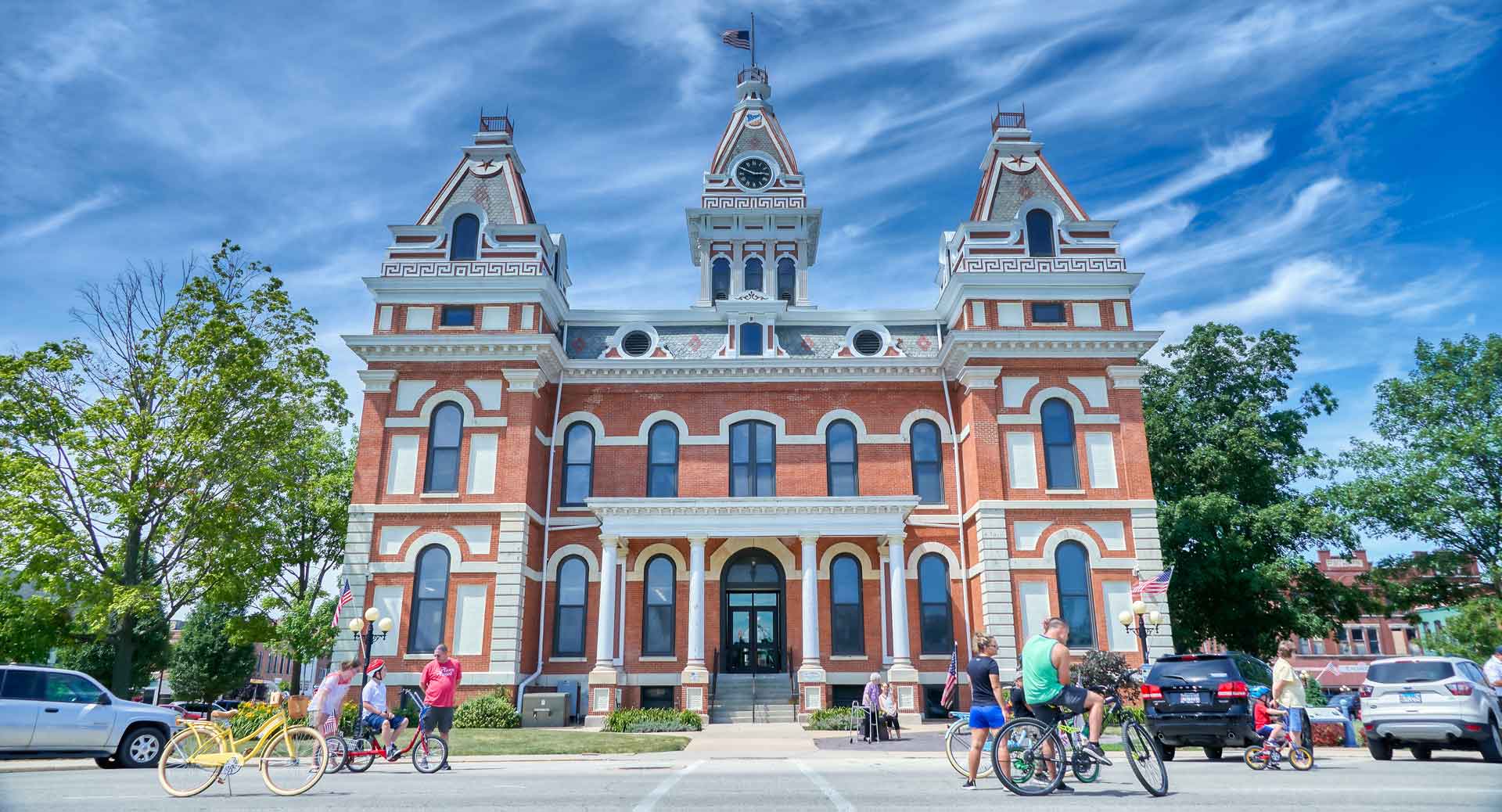
Pontiac Correctional Center History
From Reform to Lockdown
After the end of the Civil War, social reformers objected to placing convicted juvenile offenders in the same penal institutions as adult criminals, basing those objections on the belief that young men would be further corrupted by being in close proximity to dangerous felons; if sent to an adult facility, the young men might be victimized inside of prison by older inmates.
In Illinois, this progressive spirit led the state’s legislators to decide to modernize its treatment of juvenile criminals. When the State of Illinois announced its decision to build a reform school for young lawbreakers, Pontiac was interested in securing the new school’s location within the city limits. The Illinois legislature had passed an act in 1869 allowing towns possessing specified natural and acquired advantages to compete for the establishment of the school in their communities.
After due examinations by the commission appointed for that purpose and hearing the propositions from each locality, they settled on Pontiac. The Board of Trustees sought to provide “a place for the thorough reformation and elevation of the erring young people of our State.” The first buildings at the Reform School were completed, water and heating systems installed, and the grounds made ready. In June 1871, the first six young men — convicted of stealing horses in Peoria — arrived at the Illinois Boys Reformatory School in Pontiac. Over the years, they would be followed by thousands.
Reforming Troubled Juveniles
In just a few months, the pattern of life at Illinois Boys Reformatory School was set. Situated on 280 acres worked by the inmates, the institution’s buildings were, in 1872, valued at $110,000. More than 6,000 shade and fruit trees were planted, and a large field for sports — including an excellent baseball diamond — was created. The facility included dormitories, a greenhouse, factory and school classroom areas, cooking and dining facilities, and a farm. Five teachers were employed to provide instruction, as were a farmer, an engineer, a baker, overseers of shops, and others for a total of 18 employees.
The school could house up to 400 boys ages 8-16, but it took several years to approach capacity. Each of the young men assigned to the Pontiac Reformatory was expected not only to attend conventional educational classes, but also to learn a trade that would help them to become law-abiding and productive citizens in the future. The boys attended school for four hours each day except Sunday. All the common branches of knowledge were taught: reading, arithmetic, writing, history, geography, and other subjects. Several of the boys requested and received special lessons in Latin and Greek. The course of instruction was very thorough and competent teachers were employed. The prison began with a library of 1,500 volumes — which expanded to more than 12,000 volumes by 1907 — and reading evolved into one of the favorite ways to use any free time the boys had. More than 20 magazines and papers were subscribed to for the inmates, and all were reported to have been “read eagerly.” Many of the boys committed to the Pontiac Reformatory could neither read nor write upon entering the institution; however, when discharged, many of them were described by their teachers to be “fair scholars.”
Among the career choices the boys had to choose from were printing and bookbinding, blacksmithing, mechanical and electrical engineering, various branches of woodworking, bricklaying and masonry, painting and glazing, tin smithing, plumbing, tailoring, steam fitting, and shoemaking. In the shoe factory, between 70-80 boys were employed. Nearly 300 pairs of shoes or boots were produced each day and then sold by a footwear dealer. The shoe firm Tead & Son paid the Reformatory School 18 cents per day — made of six hours of work — for each young worker. Later, the task of marketing and selling the shoes made by the boys was taken over by the Pontiac shoe firm Lyon and Legg. They were, in turn, replaced by the Chicago-based R.P. Smith Sons & Company.
About 60 smaller boys were engaged in caning chairs for the Bloomington Furniture Manufacturing Company. This branch was not as profitable as the shoe factory, but it was continued as the school believed it not only kept the boys busy, but it also taught them the “proper habits of industry.” The boys not involved in learning a specific trade were employed on the farm, in the laundry, in the bakery and garden, and at miscellaneous labor. Nine hours were allowed for sleep. After school and work, the rest of the 24 hours was spent playing and dining.
A Period of Transition
In 1893, the institution was changed from a boys’ reformatory into a more conventional penal institution with the acceptance of inmates as old as 21 and later 30. The name was altered to reflect this evolution: the Illinois State Reformatory. Two new cellhouses were constructed, adding nearly 800 beds to the facility. By the turn of the century, more than 1,200 prisoners could be housed there. Rehabilitation was still favored, so training options continued to be offered. After 1904, many of the state’s youngest juvenile offenders were no longer sent to Pontiac but were placed in a new facility built in St. Charles, the Illinois School for Boys.
According to the 1907 report from the Reformatory’s Board of Managers, there were just over 1,100 inmates at the facility. Of that group, 894 were white and 218 were men of color. There were just 52 boys between the ages of 8-12, 163 boys between 13-16, 625 men who were considered redeemable, and 272 men viewed as habitual criminals and unlikely to change.
The Modern Max-Security Prison
In 1931, another cellhouse was added to the institution. All maximum age restrictions were removed in 1933, and the facility was renamed the Illinois State Penitentiary. The prison population soon topped 2,500. As the number of inmates grew, the educational opportunities shrunk. The manual training programs created to reform the youngest offenders were phased out. Educational classes continued, as did opportunities for some prisoners to work within the walls. Starting in the late 1970s, the institution was promoted to maximum security and prisoners were on 24-hour lockdown, only being allowed out of their cells for weekly exercise in the yard.
While the history of the Pontiac Correctional Facility has been generally good, there have been a few instances of escape, some periods marked by prison violence, and only rare situations that devolved into prisoner riots. The state’s worst prison riot and fire occurred at Pontiac Correctional Center on July 22, 1978. The result of the incident were scores of prisoners and guards injured, buildings damaged or destroyed to the amount of more than $4 million, and three correctional officers killed, for whom several buildings are named at the Illinois Department of Corrections Training Academy in Springfield.
The Pontiac Correctional Center is now classified as a maximum-security prison, but also has a separate medium-security facility on the grounds. Pontiac Correctional Center was threatened with shutdown in 2008, but that threat has been reduced and the institution continues in operation.
